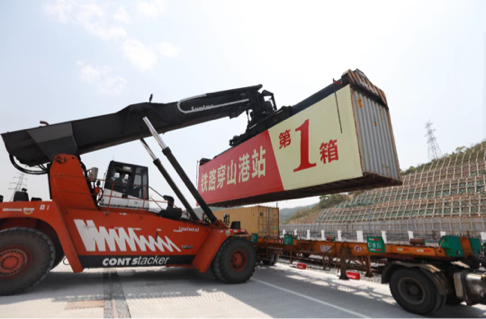Chuanshan port develops sea-rail transport business

A container transported by rail is unloaded at Chuanshan port in Ningbo, East China's Zhejiang on April 15, indicating that the sea port has now officially become a railway stop, making it possible for goods transported by rail to the port to be directly shipped to other countries and vice versa. [Photo/WeChat account: nbfb0574]
A container transported by rail was unloaded at Chuanshan port in Ningbo, East China's Zhejiang on April 15, indicating that the sea port has now officially become a railway stop, making it possible for goods transported by rail to the port to be directly shipped to other countries and vice versa.
The port is the third sea port affiliated with Ningbo-Zhoushan port, following Beilun port and Zhenhai port, to develop a "sea-railway" combined transportation model.
Chuanshan port is the world's second largest container terminal. Its container throughput has exceeded 10 million three years in a row.
In 2019, the terminal handled a total of 10.35 million TEUs.
It has opened 52 container routes, including 30 connecting with countries involved in the 21st Century Maritime Silk Road.
The Chuanshan railway station is jointly funded by the China State Railway Group Co Ltd and the Ningbo Municipal People's Government.
The station was designed with four arrival and departure lines and two loading lines, which will underpin the growth of the sea-rail combined transport capacity of Ningbo-Zhoushan port.
Official data show that the combined sea-rail transport business volume of Ningbo-Zhoushan port, China's busiest port, reached 729,000 TEUs, a year-on-year increase of 33.8 percent from January to November, 2019.
The port serves over 46 cities in 15 provinces and municipalities across the nation.



 Print
Print Mail
Mail
